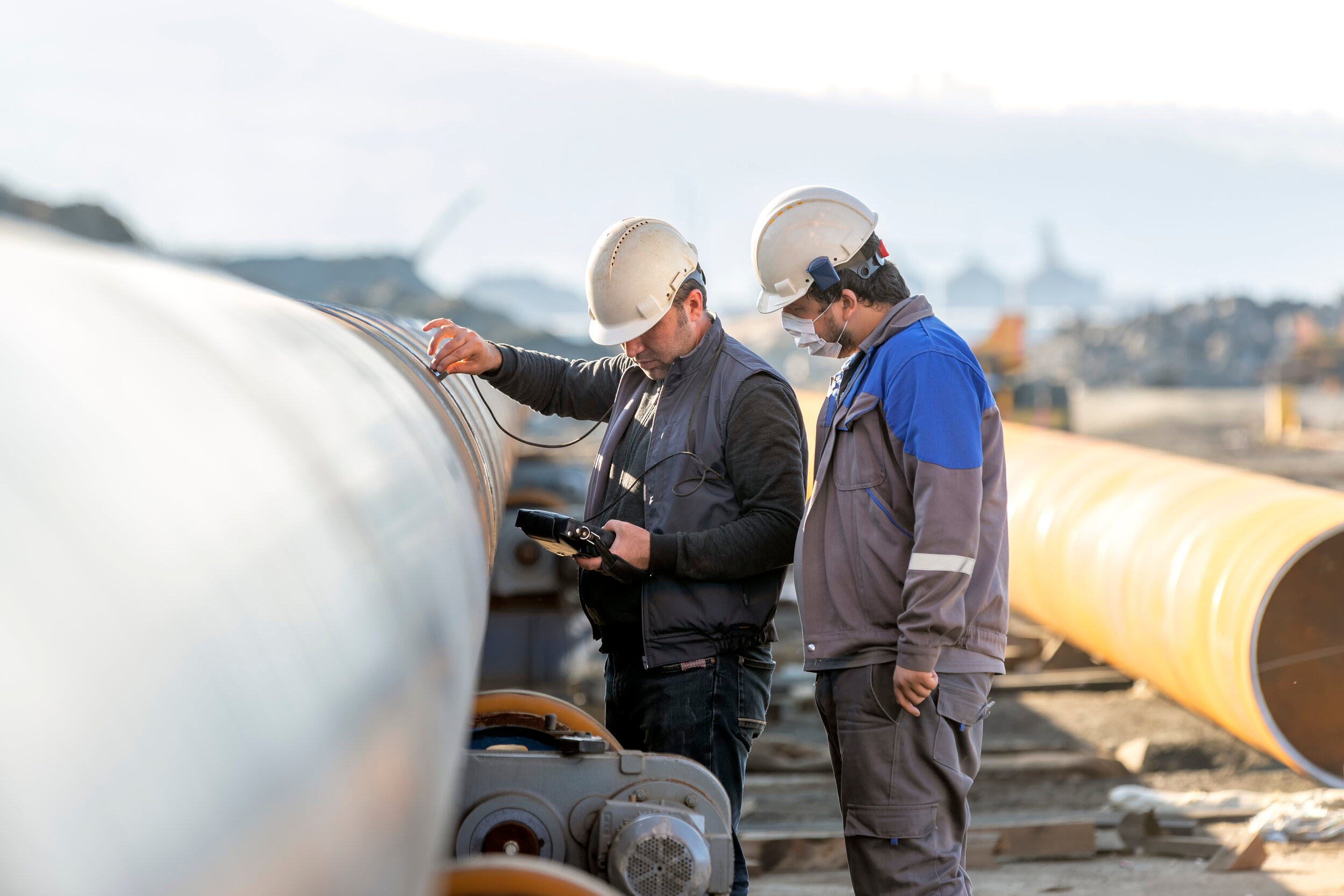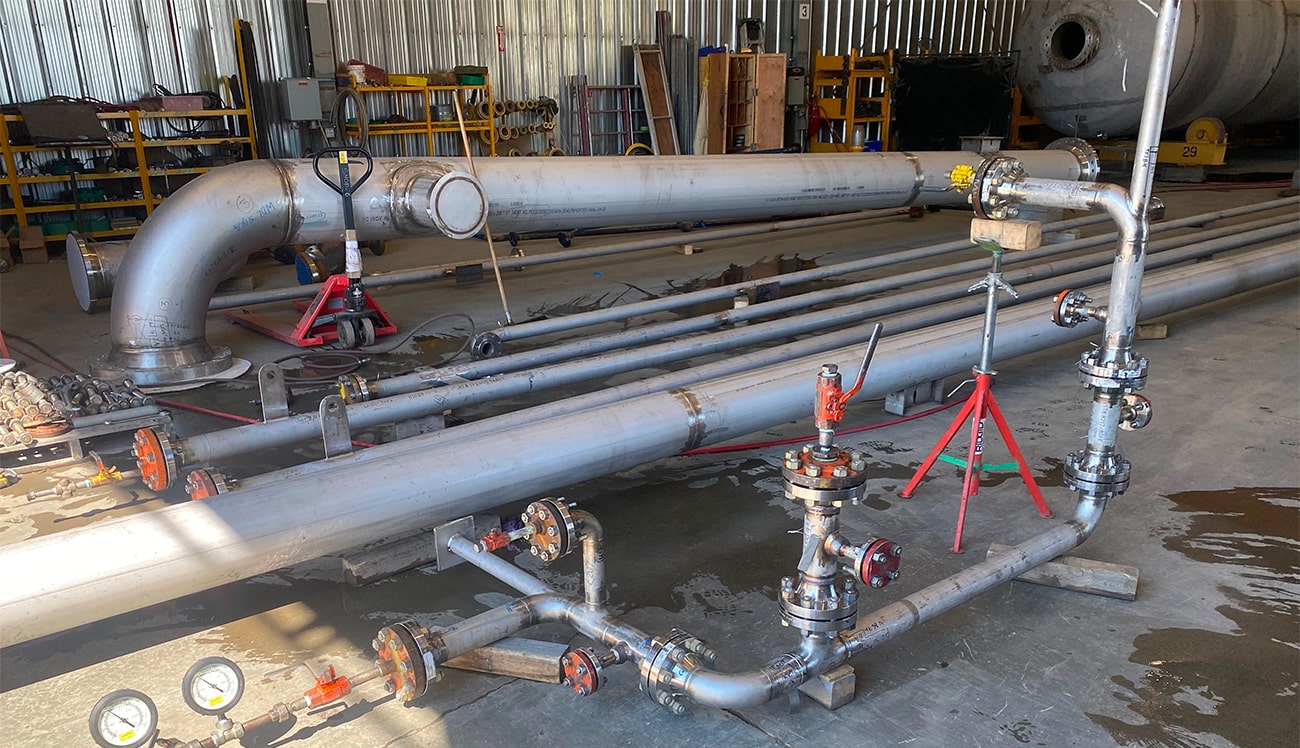Comprehensive Introduction of Pipe Welding Inspection Treatments
In the world of pipeline building and construction, making certain the stability and security of welded joints is paramount. Pipeline welding evaluation procedures play a vital role in guaranteeing that welded connections fulfill stringent sector criteria and specifications. From careful pre-welding inspections to extensive post-weld analyses, a well-defined assessment process is crucial for keeping the structural sturdiness of pipelines. Recognizing the complexities of welding inspection treatments is not just a regulative requirement however also a basic aspect of supporting the dependability of these crucial facilities.
Pre-welding Assessment Preparations
Prior to starting the welding procedure, thorough pre-welding examination preparations are necessary to guarantee the stability and quality of the weld joint. These prep work involve a precise exam of the products to be welded, the welding equipment, and the workplace. Firstly, the products should be checked for any type of defects, contaminants, or inconsistencies that could endanger the weld. This includes checking for correct product grades, measurements, and surface area conditions. Pipeline Welding Inspection. Additionally, the welding tools requires to be checked to confirm that it is in great working condition, calibrated properly, and ideal for the specific welding procedure. Any problems with the devices must be addressed promptly to avoid defects in the weld. The work setting have to be reviewed for sanitation, appropriate air flow, and security actions to make sure a favorable setting for the welding procedure. By carrying out thorough pre-welding examination preparations, potential problems can be recognized and settled at an early stage, causing high-quality and dependable weld joints.
Welding Procedure Credentials
Thorough pre-welding inspection preparations lay the foundation for the crucial procedure of Welding Treatment Credentials, ensuring the honesty and high quality of the weld joint. Welding Treatment Certification (WPQ) is a vital action in the welding procedure that entails testing and licensing welding procedures to assure they meet details criteria and needs. The WPQ process generally consists of welding procedure requirements growth, welding procedure credentials screening, and paperwork of the results.
Throughout welding treatment spec development, vital information such as the welding procedure, welding materials, joint style, and welding criteria are specified to create an extensive procedure. Ultimately, welding treatment certification screening is carried out to confirm the recommended treatment's stability. This testing usually entails welding examination discount coupons that undergo numerous mechanical and non-destructive examinations to examine the weld's quality and adherence to the defined criteria.
In-process Weld Inspection
During the welding process, in-process weld assessment plays a vital function in guaranteeing the high quality and integrity of the weld joint - Pipeline Welding Inspection. This kind of evaluation involves keeping track of the welding parameters, assessing the weld grain development, and finding any kind of potential flaws or gaps as they take place. By conducting in-process weld examinations, welding operators can quickly resolve any type of concerns that might arise, thus avoiding additional problems and guaranteeing that the final weld satisfies the needed specifications
Typical methods utilized for in-process weld assessment include visual inspection, liquid penetrant screening, magnetic bit testing, ultrasonic testing, and radiographic testing. Visual examination is usually the initial step while doing so, allowing examiners to aesthetically assess the weld for surface area irregularities such as splits, porosity, or incomplete fusion. Extra advanced approaches like ultrasonic testing and radiographic testing give detailed insights right into the internal framework of the weld, making certain that there are no hidden flaws see this page that could jeopardize the weld joint's strength and honesty. Overall, in-process weld evaluation is essential for maintaining the quality and integrity of bonded pipes.
Non-destructive Testing (NDT)
Non-destructive Screening (NDT) is a critical method employed in pipe welding assessment to assess the integrity of weld joints without creating damage to the bonded framework. By using various NDT techniques, inspectors can evaluate the quality of welds and recognize any problems or interruptions that may endanger the structural soundness of the pipe. Usual NDT approaches made use of in pipe welding evaluation include Radiographic Screening (RT), Ultrasonic Testing (UT), Magnetic Particle Examining (MPT), Liquid Penetrant Screening (LPT), and Visual Screening (VT)
RT includes making use of X-rays or gamma rays to generate images of the internal framework of the weld, allowing assessors to discover issues such as porosity, fractures, or incomplete fusion. UT uses high-frequency sound waves to detect flaws beneath the surface of the weld, offering detailed details regarding the dimension and location of flaws. MPT and LPT are utilized to recognize surface-breaking problems by applying magnetic particles or penetrant fluids to the weld area. In addition, VT entails visual assessment of welds to identify any visible imperfections.
Post-weld Examination and Paperwork


Documentation of post-weld evaluation findings is crucial for maintaining top quality control records and ensuring conformity with industry criteria and guidelines. Comprehensive records ought to consist of info about the inspection techniques made use of, the area and nature of any flaws located, and any type of restorative actions taken - Pipeline Welding Inspection. Appropriate documents not only offers as a record of the weld's quality however likewise aids in future upkeep and examination processes
Verdict

In conclusion, pipeline welding inspection procedures play a crucial function in making certain the high quality and stability of welds. Generally, adherence to appropriate examination procedures is vital to the success of pipeline welding projects.
From thorough pre-welding assessments to detailed post-weld assessments, a well-defined assessment process is necessary for keeping the architectural stability of pipelines. By performing in-process weld assessments, welding drivers can immediately address any problems that may emerge, thereby making certain and preventing more problems that the final weld satisfies the required requirements.
Common methods used for in-process weld evaluation include aesthetic evaluation, fluid penetrant testing, magnetic fragment screening, ultrasonic screening, and radiographic testing.Non-destructive Screening (NDT) is a crucial method used in pipeline welding examination to evaluate the stability of weld joints without causing damages to the welded structure. Post-weld assessment entails numerous methods to analyze the welds for defects, including visual evaluation, dye penetrant testing, magnetic fragment screening, ultrasonic testing, and radiographic screening.